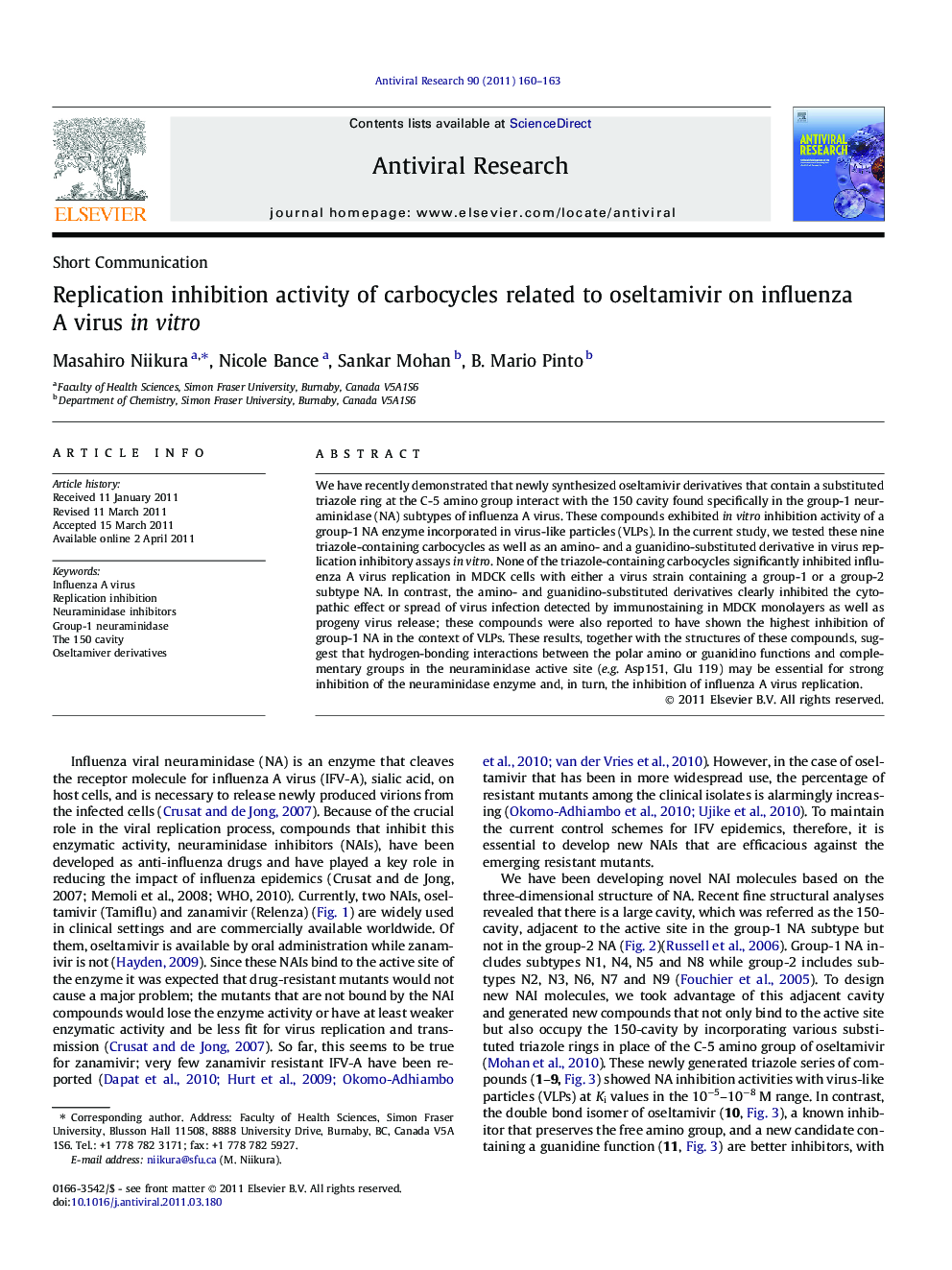| Article ID | Journal | Published Year | Pages | File Type |
|---|---|---|---|---|
| 2510251 | Antiviral Research | 2011 | 4 Pages |
We have recently demonstrated that newly synthesized oseltamivir derivatives that contain a substituted triazole ring at the C-5 amino group interact with the 150 cavity found specifically in the group-1 neuraminidase (NA) subtypes of influenza A virus. These compounds exhibited in vitro inhibition activity of a group-1 NA enzyme incorporated in virus-like particles (VLPs). In the current study, we tested these nine triazole-containing carbocycles as well as an amino- and a guanidino-substituted derivative in virus replication inhibitory assays in vitro. None of the triazole-containing carbocycles significantly inhibited influenza A virus replication in MDCK cells with either a virus strain containing a group-1 or a group-2 subtype NA. In contrast, the amino- and guanidino-substituted derivatives clearly inhibited the cytopathic effect or spread of virus infection detected by immunostaining in MDCK monolayers as well as progeny virus release; these compounds were also reported to have shown the highest inhibition of group-1 NA in the context of VLPs. These results, together with the structures of these compounds, suggest that hydrogen-bonding interactions between the polar amino or guanidino functions and complementary groups in the neuraminidase active site (e.g. Asp151, Glu 119) may be essential for strong inhibition of the neuraminidase enzyme and, in turn, the inhibition of influenza A virus replication.
